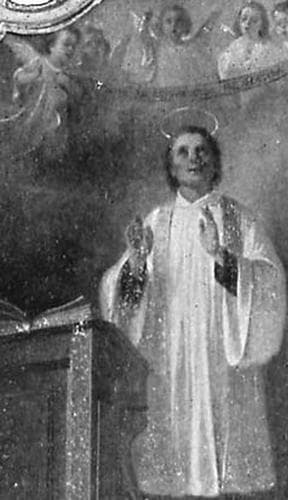
Blessed William Of Morgex
Blessed
Feast Day: February 7
Biography
Blessed William of Morgex, also known as William of Léaval, was a priest from the town of Morgex, Italy, believed to have lived in the 8th century. While there is limited certain information about his life, a strong tradition surrounds his existence and veneration.
The knowledge about Blessed William centers around the discovery of a grave in the Léaval Plaza at the church of Santa Maria Assunta in Morgex in the year 1687. Within the tomb, a chalice and paten were found, indicating that the deceased individual was a priest. Although there was no explicit identification, the local community assumed it to be the resting place of Blessed William. It is important to note that the assumption is based on the presence of these sacred vessels buried with the body.
Subsequently, a number of legends and stories began to circulate about the life of Blessed William, as often happens with venerable figures from the past. Unfortunately, these stories did not provide any concrete information about his origins, family, or specific actions accomplished during his lifetime. Therefore, the details surrounding his birth, personal accomplishments, and ministry remain unknown.
Blessed William's representation is not specified in the available information. However, it is common for depictions of saints to vary, often influenced by local customs and traditions. Artists may portray him as a priest holding a chalice or paten, signifying his connection to the sacred vessels discovered in his grave.
Although there is no record of the exact date of his birth, the day of his commemoration is celebrated on February 7th. This feast day allows for the faithful to honor and remember the life and alleged holiness of Blessed William.
The discovery of the grave and the veneration towards Blessed William gained further recognition when, in 1877, Pope Pius IX officially beatified him. The act of beatification confirms the cultus, or devotion, that had been growing around him.
Following the discovery, the relics of Blessed William were soon enshrined in a silver urn, becoming objects of veneration and pilgrimage for the faithful. Thus, his tomb at the church of Santa Maria Assunta in Morgex became a site where people sought his intercession and honored his memory.
Although there is a lack of substantial historical information about Blessed William of Morgex, his memory and veneration have endured through the centuries. He remains an inspiration for the faithful, representing the life of a holy priest whose dedication to his ministry and the Eucharist earned him a place of honor in the spiritual legacy of Morgex.